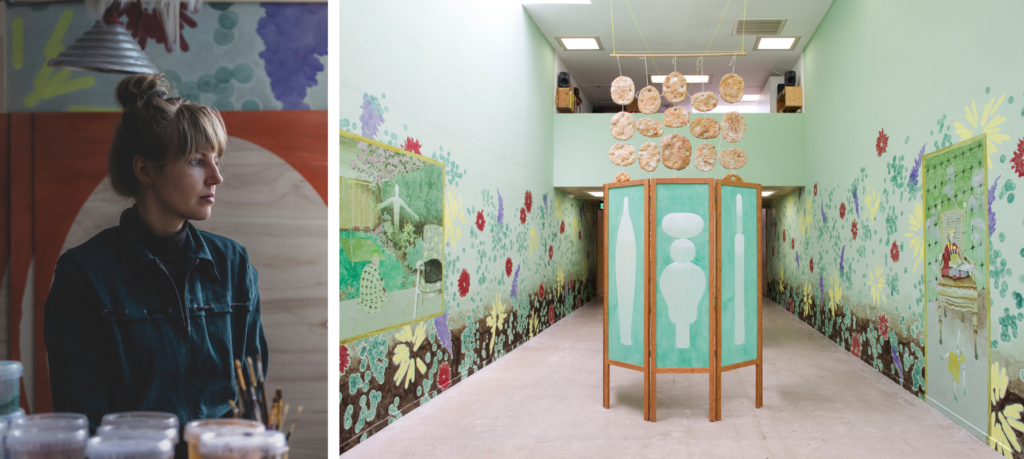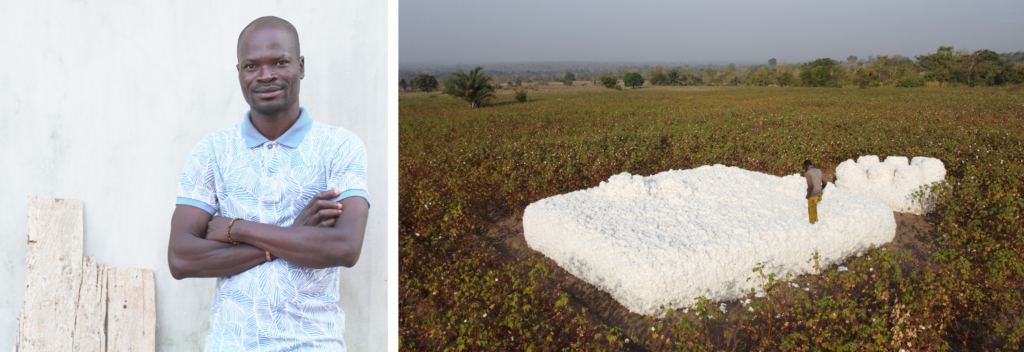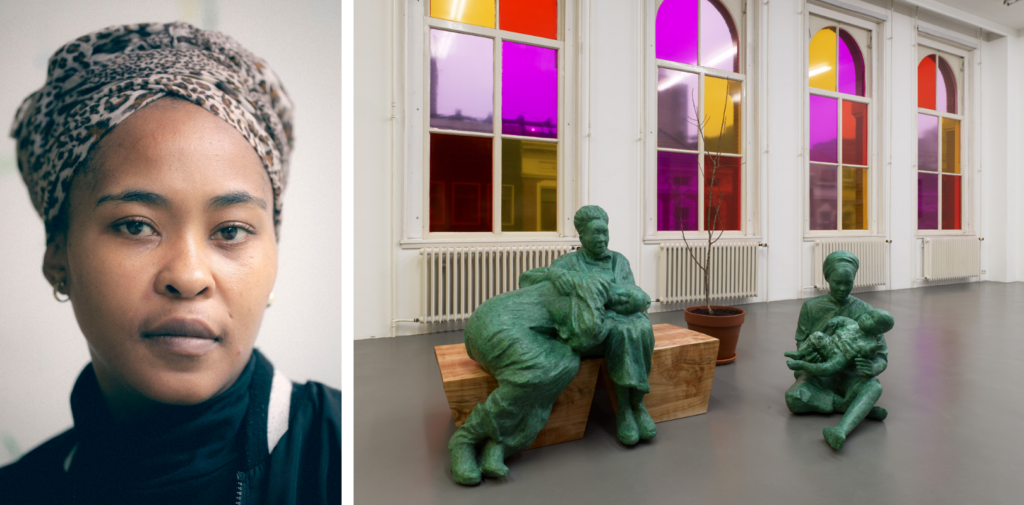Fiona Lutjenhuis, Kevin Osepa, Thierry Oussou and Buhlebezwe Siwani have been nominated for the Prix de Rome Visual Arts 2025. The Mondriaan Fund today announced the shortlist for its incentive award for emerging visual artists.
The four nominees will receive a production budget to create new work in the coming months. The ultimate winner will be selected by the jury based on this new work, which will go on display at the Stedelijk Museum Amsterdam from Saturday 29 November 2025 onwards. When making their decision, the jury focuses primarily on how the artist offers new insights into visual art within the Kingdom of the Netherlands, thereby contributing meaningfully to its development. The winning artist will receive a cash award of € 60,000 to support their artistic practice.
To arrive at this selection of artists, the jury visited exhibitions over the past year and scouted potential candidates. The jury believes that Lutjenhuis, Osepa, Oussou and Siwani all represent, each in their own way, promise for the future. While one stood out with a single, powerful presentation that had immediate impact on the art field, another convinced with a diversity of expressions across multiple presentations. And while one took a clear stand on a pressing social issue, another offered a deeply personal reflection on what it means to be human. The jury notes that all four nominees are united by their unique visual language and convincing vision within what is still, for most, a developing oeuvre.
Jury
The members of the jury for the Prix de Rome Visual Arts 2025 are: Colin Huizing (independent curator), Imara Limon (Chief Curator at Amsterdam Museum), Rita Ouédraogo (Co-Founding Curator at Buro Stedelijk, researcher and writer), Wilma Süto (Curator of Modern and Contemporary Art at the Dordrechts Museum), Joep Vossebeld (Curator at Odapark Venray and writer) and Eelco van der Lingen (Director of the Mondriaan Fund), who is non-voting Chair.
The shortlist

Fiona Lutjenhuis
Fiona Lutjenhuis has a multidisciplinary practice encompassing installations, paintings, sculptures, and artists’ books. Lutjenhuis grew up in a cult, and learned to see the world differently to her peers. By taking this history as her subject, the artist explores how beliefs and fantasies – from secret societies to extraterrestrial life – can shape our perception of reality.

Kevin Osepa
Kevin Osepa is a visual artist and filmmaker. His work focuses on Afro-Caribbean spirituality, identity and colonial memory, often addressed from a personal and queer perspective. Osepa uses photography, video and installations to create worlds in which suppressed knowledge and rituals are given new life.

Thierry Oussou
Conceptual artist Thierry Oussou uses various media to visualise his narratives. In his recent work, he focuses on professions that are often marginalised, such as drivers, builders and cotton workers. Oussou explores the conditions under which they work, aiming to highlight their significance to society.

Buhlebezwe Siwani
As a Sangoma, a traditional spiritual healer, Buhlebezwe Siwani explores the relationship between ancestral rituals and modern life in South Africa. Her own body often plays a central role in her performances, photography, sculptures and installations. The artist draws on her personal experience to illuminate socio-political themes, such as the Black female body, colonial history, Black communities and the tensions and paradoxes of modern-day society.